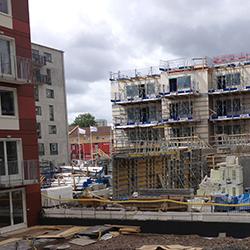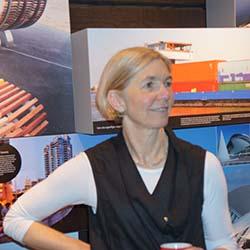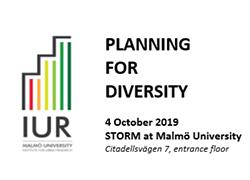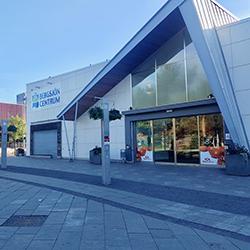
Where Architecture Meets Planning, Where the Plan Meets the People
Over the past 15 years innovative, experimental and sustainable housing developments have been built in Sweden, from Bo01 in Malmö to Stockholm’s Hammarby Sjöstad to Kvillebäcken in Gothenburg. But close examination of these developments reveals that the best planning and the best architecture have not yet met to create good places to live, in spite of everyone’s best intentions. The areas lack vitality and the everyday life that characterize urban neighborhoods. This project will therefore propose new strategies and policies for new sustainable urban neighborhoods.
Strong demonstration developments
The problem extends beyond Sweden, but few countries have created as many strong demonstration developments. Some developments have evolved over time to become more livable, while others have become highly expensive, unsustainable, segregated and have undermined their original goals.
The contradiction of a new neighborhood
The construction of a “new neighborhood” is a contradiction in terms, since a good part of any community is the relationships among its residents which cannot be built, but must grow in place, over time. The necessary components of good neighborhood design have been considered at least since ancient Rome. Sweden more than perhaps any country in the world, has intensely studied domesticity over the last century in order to develop guidelines for decent housing. Yet when visiting for example Lindholmen in Gothenburg on the northwest banks of Göta Älv, it is apparent that good housing architecture and good planning have yet to create a vital neighborhood. As the wind whips along the empty walkways, there is an apparent gap where architecture meets planning, and where the plan meets the people.
Design and planning tactics
The project Where Architecture Meets Planning, Where the Plan Meets the People will run for two years and investigate successful design and planning tactics particularly in Nordic countries, that have made urban vitality more possible in the existing demonstration housing developments. The project will also propose new strategies and policies for architects and planners to deploy as they construct new urban neighborhoods.
The project has the following four research objectives:
- To better understand how to create vital and sustainable urban neighborhoods in new housing districts.
- To develop means to improve upon current housing development practices
- To transform the lessons learned into recommendations for new housing developments in Gothenburg
- To communicate these recommendations in terms of policy, design, and planning.
Three aspects - planning process, field work and case studies
The project has studied three aspects; the first is the architecture and planning process in the City of Gothenburg. There is no shortage of capacity: Gothenburg has about 50,000 city employees, including a sizable planning capability, transit authority, as well as a public-private development company, Älvstranden, and able architectural firms. The primary question has concerned the intersections between different agencies to determine if some critical segments of the built environment have been overlooked. This has been done in cooperation with the project Business-Oriented Sustainable Urban Development.
The second aspect is fieldwork focused on the housing developments themselves, and has comprised site visits to a range of housing developments in Gothenburg, Shanghai and Los Angeles to determine where the missed opportunities are located. In particular, “hot spots” or “acupuncture points” have been sought. These are places where small-scale interventions could have broader or even systemic implications.
The third aspect focus on prior scholarships and case studies with emphasis on the problematic disconnect between buildings and the contemporary city. In addition, new methods of urban analysis, representation, and design have been reviewed.
About Dana Cuff
Dana Cuff is Professor of Architecture/Urban Design and Urban Planning at UCLA. She is a visiting professor at Chalmers University of Technology and at Gothenburg University, and Mistra Urban Futures. As Director of the think tank cityLAB-UCLA, Dana Cuff’s expertise is in urban design and implementation. She is the author of The Provisional City and Architecture: The Story of Practice which among other topics covers the Los Angeles development, Playa Vista. Dana Cuff publishes and lectures widely on issues concerning the post-suburban condition, affordable housing, urban sensing, and the politics of place. Read more
Follow Dana Cuff on Twitter: @danacuff







